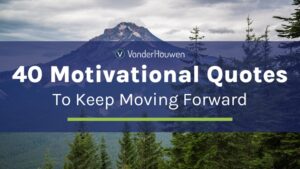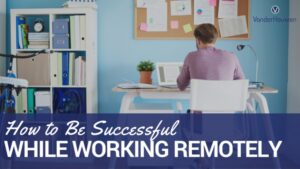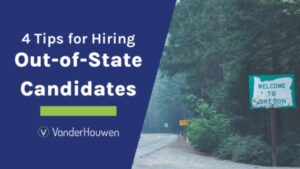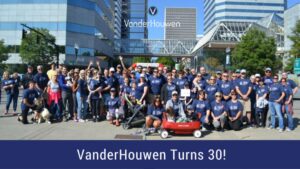Supercharge Your Candidate Experience to Optimize Recruiting Efforts
Top of the year, with new budgets and hiring goals to work toward, often brings an influx of hiring. Strategic hiring requires a deep understanding of your recruiting goals, onboarding processes, and company culture. First, you need to identify which stages in the hiring process have the highest impact on candidates. From navigating your company website to searching job descriptions and applying for open roles, each touchpoint is an opportunity to enhance the candidate experience.
Ideally, candidates should be able to find your postings easily, be offered a simple application process, and a consistent feedback loop on the status of their candidacy. In other words, new hires should have a good experience with your company even before their first day to set the tone for their future professional growth. If you’re not sure how to upgrade your candidate experience, our 7 steps will kickstart your process:
Uncover areas of your candidate experience where you feel you’re doing well — you can even solicit feedback from recent hires/interviewees. They’ll likely give you what worked well for them and what didn’t. Open the conversation to share their interview experience at other companies too. There may be some insights you could apply (or skip) in your own process. Once you’ve reviewed the candidate journey, you’ll likely have a blueprint of what needs to be adjusted for an optimal candidate experience.
If you don’t already have a careers page, you’re missing out! The careers page is a great place to get people excited about working for and with you. Draw in self-starters, collaborators, and leaders by creating easy access to your company’s mission, core values, and how your company brings value to your customers. Use employee testimonials to describe what it’s like to work with you.
Consider the audience you’re looking to reach: GenZ candidates don’t want or need the same things as millennials. Ensure you include exciting content to captivate the job seeker right away — include why the job would be exciting and the value it brings to your company and customers. Tailor your job descriptions to match the market’s needs and focuses. Not sure how to update your descriptions to reach the right candidates? Reach out to a recruiter for guidance!
How many interviews do potential hires need to complete before extending an offer? Are there skill assessments involved? How much time do those require? Though many interview processes are conducted virtually, candidates could still have difficulty making themselves available, especially if they are currently working. Instead, try joint virtual interviews so that everyone normally involved in hiring can meet with the candidate without carving excess time out of an already maxed schedule.
If you aren’t moving forward with a candidate, let them know as soon as possible. By promptly telling them they’re not in the running for the position, they’ll be able to continue their search with some closure vs. wondering if they’ll ever hear back. If they ask for feedback, provide it so they have clarity on interview performance or whether professional development opportunities may be in order.
After you’ve responded to the feedback, look for opportunities to reach back out soon to settle the matter where possible. Online review platforms may not offer a way to continue to interact on the post and many times the poster is anonymous, so you may wait for the person to reach out if you've invited them to do so offline. Hearing someone’s grievances are not the same as actively working to fix them. Be transparent about what you’ve done to fix the problem, even if it’s not something you can change (like a software or website glitch that's already being worked on). Communication is key and a major asset to aid your candidate experience when used correctly.
Ideally, candidates should be able to find your postings easily, be offered a simple application process, and a consistent feedback loop on the status of their candidacy. In other words, new hires should have a good experience with your company even before their first day to set the tone for their future professional growth. If you’re not sure how to upgrade your candidate experience, our 7 steps will kickstart your process:
1. Evaluate the current state
In order to determine what works in your hiring process, you must understand the candidate journey when applying to your company. Every email or phone call the candidate receives, each webpage they visit, and similar interactions will play a part in crafting their impression of you. It may also influence their decision to recommend your company, even if they aren’t hired on.Uncover areas of your candidate experience where you feel you’re doing well — you can even solicit feedback from recent hires/interviewees. They’ll likely give you what worked well for them and what didn’t. Open the conversation to share their interview experience at other companies too. There may be some insights you could apply (or skip) in your own process. Once you’ve reviewed the candidate journey, you’ll likely have a blueprint of what needs to be adjusted for an optimal candidate experience.
2. Update your website
Not only should your website be user friendly, but it should give a sense of who you are as a company. A directory of staff members’ photos and job titles are a great way to start. You can even add a short bio or links to their LinkedIn page! Whether that includes everyone or just leadership is up to you; the point is to show a little of the company’s soul online and make it more accessible and personal.If you don’t already have a careers page, you’re missing out! The careers page is a great place to get people excited about working for and with you. Draw in self-starters, collaborators, and leaders by creating easy access to your company’s mission, core values, and how your company brings value to your customers. Use employee testimonials to describe what it’s like to work with you.
3. Update your job descriptions
If you’re looking to kick off your hiring program for the new year, it’s the perfect time to review your internal job descriptions and external job ads. Job descriptions are often the first thing that leads a candidate to your company. Be inclusive and gender-neutral in your tone and wording. Be clear about expectations for the position in the job post — who are you looking for and what will they do?Consider the audience you’re looking to reach: GenZ candidates don’t want or need the same things as millennials. Ensure you include exciting content to captivate the job seeker right away — include why the job would be exciting and the value it brings to your company and customers. Tailor your job descriptions to match the market’s needs and focuses. Not sure how to update your descriptions to reach the right candidates? Reach out to a recruiter for guidance!
4. Simplify your processes
We all know that thoroughly vetting candidates is necessary, but so is expedience. Taking weeks to deliberate a hire could mean losing them to a competitor. Instead, find ways to shorten your hiring process.How many interviews do potential hires need to complete before extending an offer? Are there skill assessments involved? How much time do those require? Though many interview processes are conducted virtually, candidates could still have difficulty making themselves available, especially if they are currently working. Instead, try joint virtual interviews so that everyone normally involved in hiring can meet with the candidate without carving excess time out of an already maxed schedule.
5. Keep communication flowing
A big part of a positive candidate experience is communication; both during and outside the interview processes. Before an interview, let them know what to expect: provide names of who they’re meeting (including job titles) and the goal of the meeting. It’s also highly advisable to set up your interview team with structured interviews, so individual candidates are evaluated using the same questions. Plan the structured interview in advance and be sure to clarify the desired outcomes with your interview team. Proactively inform candidates if there’s a delay in decision making due to time off or other reasons. It’s highly likely your candidate is continuing to pursue other opportunities — don't lose touch if you’re interested in them.If you aren’t moving forward with a candidate, let them know as soon as possible. By promptly telling them they’re not in the running for the position, they’ll be able to continue their search with some closure vs. wondering if they’ll ever hear back. If they ask for feedback, provide it so they have clarity on interview performance or whether professional development opportunities may be in order.
6. Address online reviews
Often, companies ignore their online reviews, but that’s a mistake. Candidates often look at employee reviews of companies before applying or accepting an offer. Negative experiences spread faster than positive ones. If left to fester with no comment from management, bad reviews can easily become part of your brand, so fix any negative experiences as quickly as possible. Keep your response succinct. Thank the poster for their comment, share what insight you can on the matter (especially if any improvements are in process), and offer to connect offline when appropriate. Be sure to respond to both positive and negative reviews. It will demonstrate you’re actively listening and committed to engaging with your audience.After you’ve responded to the feedback, look for opportunities to reach back out soon to settle the matter where possible. Online review platforms may not offer a way to continue to interact on the post and many times the poster is anonymous, so you may wait for the person to reach out if you've invited them to do so offline. Hearing someone’s grievances are not the same as actively working to fix them. Be transparent about what you’ve done to fix the problem, even if it’s not something you can change (like a software or website glitch that's already being worked on). Communication is key and a major asset to aid your candidate experience when used correctly.
7. Competing offers? Offer an internal reference
Normally, reference checks are done by the employer to gain feedback on a candidate’s abilities, but if you have a candidate entertaining multiple job offers, give them an inside look at your company! Offer phone or video calls with their prospective boss, counterpart, and another member of the team. Think of it as a personal and company value-add check: if the prospective candidate enjoys speaking with the team and/or gains deeper clarity of how they’ll grow with the company, this could seal their decision to accept your offer. Likewise, the candidate could find that the team/management style may not suit them. By empowering the candidate, you could potentially avoid hiring someone who isn’t a good fit for your organization.Want to learn how to create an easy-to-use remote onboarding process that works? Read on!































































































































